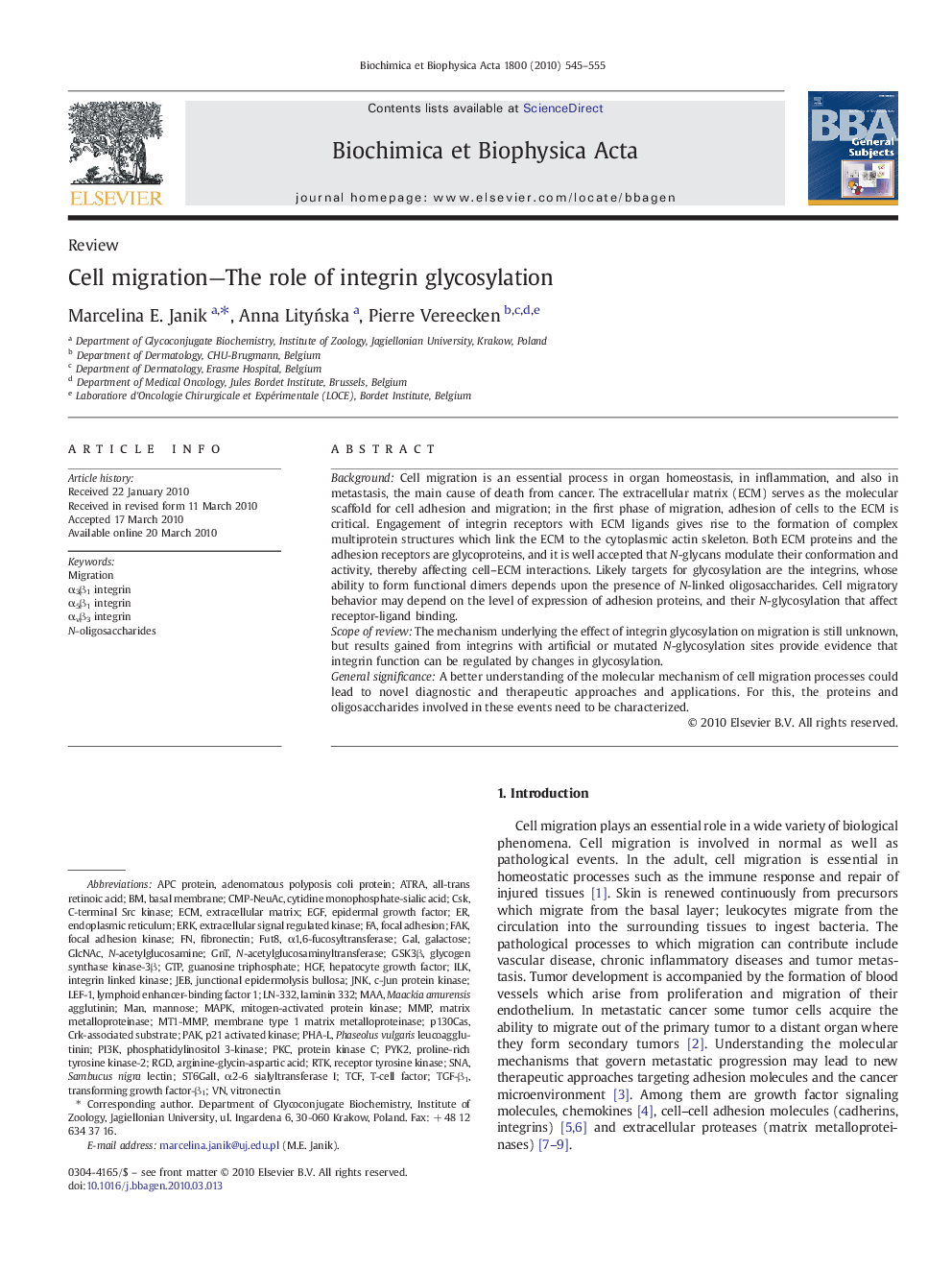| کد مقاله | کد نشریه | سال انتشار | مقاله انگلیسی | نسخه تمام متن |
|---|---|---|---|---|
| 1947969 | 1054665 | 2010 | 11 صفحه PDF | دانلود رایگان |

BackgroundCell migration is an essential process in organ homeostasis, in inflammation, and also in metastasis, the main cause of death from cancer. The extracellular matrix (ECM) serves as the molecular scaffold for cell adhesion and migration; in the first phase of migration, adhesion of cells to the ECM is critical. Engagement of integrin receptors with ECM ligands gives rise to the formation of complex multiprotein structures which link the ECM to the cytoplasmic actin skeleton. Both ECM proteins and the adhesion receptors are glycoproteins, and it is well accepted that N-glycans modulate their conformation and activity, thereby affecting cell–ECM interactions. Likely targets for glycosylation are the integrins, whose ability to form functional dimers depends upon the presence of N-linked oligosaccharides. Cell migratory behavior may depend on the level of expression of adhesion proteins, and their N-glycosylation that affect receptor-ligand binding.Scope of reviewThe mechanism underlying the effect of integrin glycosylation on migration is still unknown, but results gained from integrins with artificial or mutated N-glycosylation sites provide evidence that integrin function can be regulated by changes in glycosylation.General significanceA better understanding of the molecular mechanism of cell migration processes could lead to novel diagnostic and therapeutic approaches and applications. For this, the proteins and oligosaccharides involved in these events need to be characterized.
Journal: Biochimica et Biophysica Acta (BBA) - General Subjects - Volume 1800, Issue 6, June 2010, Pages 545–555